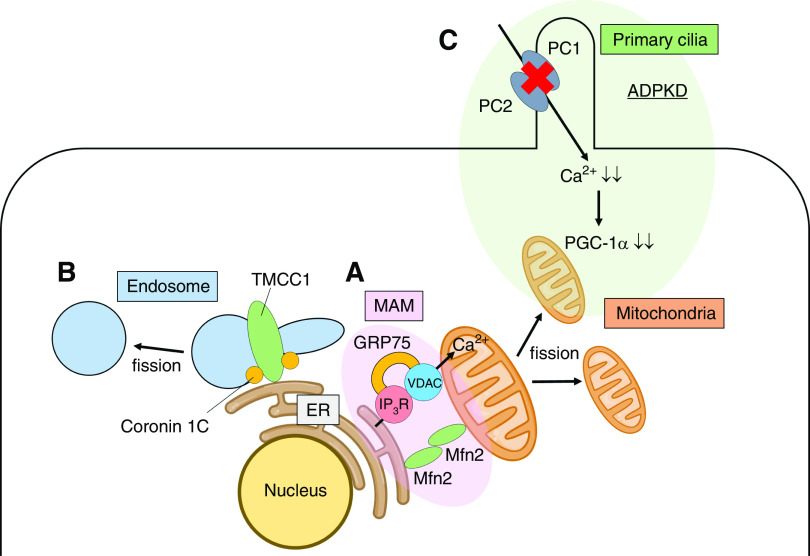Figure 4.
Organelles closely interact with one another to maintain cellular functions. (A) The crosstalk between the ER and mitochondria is shown. The part of the ER that is directly connected to mitochondria is termed the mitochondria-associated ER membrane (MAM), which consists of various proteins including inositol trisphosphate receptor (IP3R), voltage-dependent anion channel (VDAC), glucose-regulated protein 75 (GRP75), and mitofusin 2 (Mfn2). MAMs maintain cellular homeostasis. Calcium (Ca2+) is transported from the ER to mitochondria via IP3R and VDAC. The mitochondrial fission also occurs at the MAM’s position. (B) The link between transmembrane and coiled-coil domain family 1 (TMCC1) and coronin 1C at the ER-endosome membrane contact sites defines the timing and position of endosomal fission. (C) The crosstalk between the primary cilia and mitochondria in autosomal dominant polycystic kidney disease (ADPKD) is shown. Polycystin-1 (PC1) and polycystin-2 (PC2) are located in the cilia of the renal proximal tubular cells and regulate cellular calcium homeostasis. The mutations of PC1 and PC2 in ADPKD reduce the cellular calcium concentration. The decrease in calcium concentration suppresses peroxisome proliferator-activated receptor γ coactivator 1-α (PGC-1α) expression, the master regulator of mitochondrial biogenesis.

